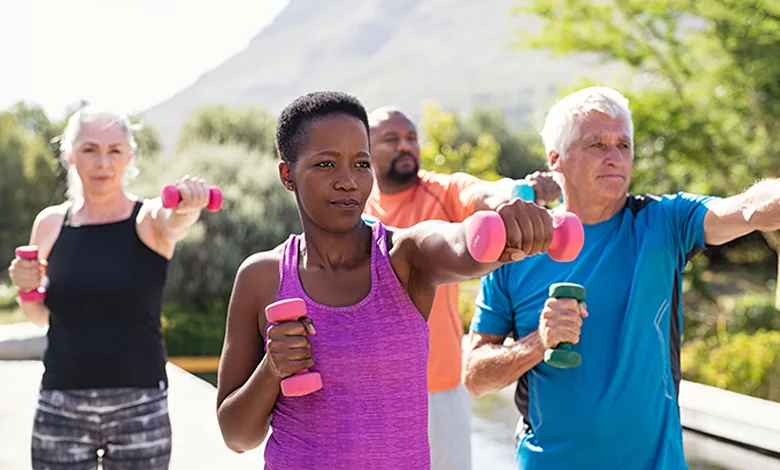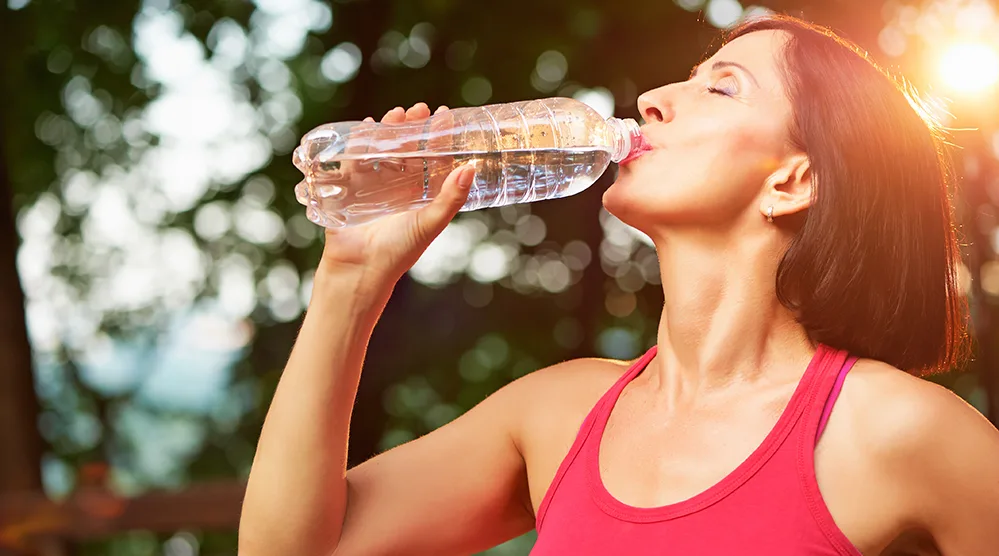
Contrary to the popular belief that you need to slow down as you age, research has proven that continuing to exercise regularly is the secret sauce to aging well. The National Council on Aging shares that consistent workouts among older adults can reduce the risk of serious conditions like heart disease, bone loss, and depression.
Interestingly, these benefits are magnified when workouts are done outdoors. According to reports, working out outdoors can offer perks beyond what an indoor workout can. For instance, exposure to Vitamin D can help with mood regulation, sleep hygiene, inflammation, and more. For older adults, studies by the National Environmental Education Foundation note that walking even just two hours weekly can lower mortality risk. As a result, some doctors have even begun prescribing nature visits to their patients. That said, because the great outdoors is not a controlled environment, active adults need to take extra precautions before heading out.
Friendly Outdoor Exercise Reminders for the 50+ Crowd

Don’t forget to hydrate
While most people know how to prepare for the cold, many underestimate the heat. Being outside means you’re at the mercy of the sun and fluctuating temperatures. This is especially true for those of us in our 50s.
Dehydration among older adults can be missed since the body is slower to fight it. Specifically, the body’s thirst signals are dull, the kidneys may not work as well, and some medications, like diuretics, can worsen dehydration.
To prevent this, make sure to always have a bottle of water with you. As a rule of thumb, the Centers for Disease Control and Prevention suggests drinking a cup of water every 15-20 minutes spent working outdoors. If you need to, you can also pack hydrating yogurts if you have problems drinking thin liquids. Alternatively, special hydration products like Jelly Drops can be appealing if you want something with extra flavor and electrolytes. Should you forget, you can also set a reminder on your phone, which helps you regulate your hydration levels.

Value your eye protection
We’d like to deny it, but vision impairment is common among older adults. As the eye muscles weaken with time, issues like blurry vision and eye fatigue have a higher chance of occurring. Not to mention there are also age-related conditions like cataracts and diabetic retinopathy. Exercising outdoors can lead to problems like ocular strain, which can impair performance, or even more serious falls as you struggle to see the terrain.
Among the best ways to prevent this is to wear the right eyewear. When outside for extended periods, your regular glasses aren’t enough. Instead, it’s best to opt for a pair of sunglasses that fit well and offer UV protection.
Case in point, Oakley shades offer polarized lenses to reduce glare while improving visual clarity. With these types of sunglasses, those of us 50 and over can see more clearly and perform more confidently. They also reduce the risk of UV exposure worsening any age-related vision concerns like macular degeneration, which is sensitive to sun damage.

Invest in good footwear
Finally, remember the importance of balance and stability. Adults over 50 are more prone to losing their balance due to a decline in strength and flexibility, among other problems. This may not be as big of an issue in a controlled area like a gym or court, but out on the trail or waterfront, this can result in nasty slips. Slips can cause joint issues or can escalate into dislocations or fractures.
Thankfully, there are a number of sportswear shoes designed for older adults. For example, podiatrists have noted that Hoka shoes are ideal for those over a certain age. Finding cushioning footwear can help even your weight distribution and pad the impact on the feet and joints.
Of course, before you embark on any outdoor workout, make sure to get your doctor’s clearance and advice. With a healthcare expert’s go-ahead, you can make outdoor workouts a regular part of staying fit in your 50s and beyond.





